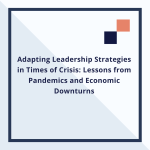In today’s fast-paced business environment, strategic leadership has become a crucial tool for achieving sustainable success. At the core of this process lies strategic planning, a vital mechanism that helps companies set long-term goals and wisely allocate resources to achieve them amidst unpredictable market conditions.
Table of contents [Show]
The Concept of Strategic Planning
Strategic planning is a forward-looking, continuous process that aims to set a comprehensive vision for a company and define long-term strategic goals. This process relies on evaluating the opportunities and challenges the company faces, along with assessing the internal and external factors that influence its path.
The Concept of Strategic Leadership
Strategic leadership is the ability to steer an organization toward achieving its strategic objectives through a deep understanding of both internal and external environments. Strategic leaders make informed decisions that support the organization’s overarching vision. Unlike traditional leadership, strategic leadership demands a long-term perspective and the ability to adapt to changing circumstances and guide the organization towards innovation and growth.
The Relationship between Strategic Planning and Strategic Leadership
- Defining the Vision and Goals: Strategic leaders are responsible for defining the company’s vision and key objectives. They rely on detailed market analysis and opportunities to achieve sustainable growth. Strategic planning serves as the roadmap for realizing this vision by outlining actionable strategies.
- Analysis and Assessment: Strategic leaders need strategic planning tools to analyze the competitive landscape and understand market needs. This involves using tools like SWOT analysis (Strengths, Weaknesses, Opportunities, Threats) to identify both internal and external factors impacting the organization.
- Execution and Adaptation: After the strategic plan is established, the next critical step is execution. Here, strategic leadership comes into play by managing resources, guiding teams, and ensuring that everyone is aligned with the agreed-upon strategy. At the same time, the strategic leader must be flexible enough to adjust the plan based on changes in the external environment.
- Achieving Sustainable Competitive Advantage: The ultimate goal of both strategic planning and strategic leadership is to secure a sustainable competitive advantage. Leaders must possess the ability to innovate, foresee future trends, and develop creative solutions that allow the company to outperform its competitors.
The Role of Strategic Leaders in Successful Strategic Planning
Strategic leaders play a pivotal role in guiding the strategic planning process. They must:
- Communicate Clearly: Leaders need to articulate the vision and goals clearly to ensure full alignment and commitment across the team.
- Inspire and Motivate: A strategic leader is not only the architect of the strategy but also the driving force that motivates the team to execute it with a spirit of collaboration and innovation.
- Manage Change: Rapid changes in the marketplace require leaders to be prepared to adopt new strategies and adjust the course to suit evolving circumstances.
Strategic planning and strategic leadership are two interdependent elements necessary for corporate success. Strategic planning provides the direction, while strategic leadership is the engine that drives the organization forward. Without clear leadership, strategic planning becomes just a document, and without strategic planning, leaders lack the guidance to lead their organizations toward a prosperous future.






